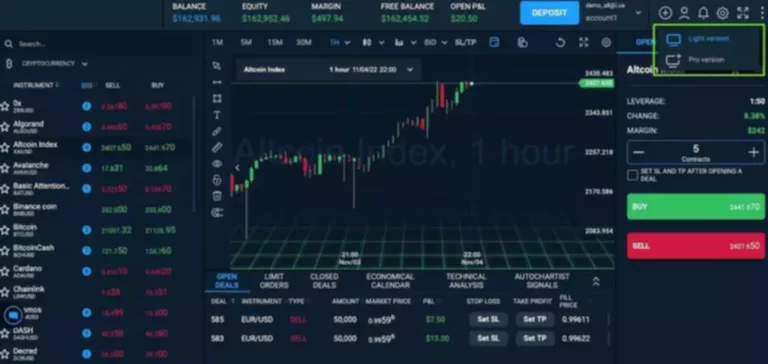Tolerant to actively managed funds, there is not any pressure to outperform the market and create larger returns. Investors can even consider utilizing both investing strategies to get the most effective of both worlds. Having said that, the proper funding technique is the one that fits your objectives, timeline, and priorities – and the one you are feeling snug and confident sticking with for a really lengthy time. As passive investing adheres to a predefined algorithm, it presents much less flexibility in comparison to active investing.

There may be other / higher alternatives to the investment avenues displayed by BFL. Hence, the ultimate investment determination shall always completely remain with the investor alone and BFL shall not be liable or liable for any consequences thereof. Passive investing has been rising as an different selection to energetic investing given the reason that a large universe of lively fund managers underperform their respective benchmarks post bills. Propagation of passive funds by some massive legendary buyers (who have created wealth by lively investing) has additional added to the popularity of passive funds. Passive investing, however, takes a extra long-term and low-cost strategy to investing. Instead of making an attempt to beat the market, passive investors purpose to match the performance of a selected index or benchmark.
Trending Portfolios
Instead of choosing particular investments, passive buyers use funds that duplicate the general market, like index funds or ETFs. A passively managed portfolio is a group of securities which are designed to copy the performance of a benchmark index, such because the Nifty 50 or the Sensex. The portfolio doesn’t contain any active determination making by a fund supervisor, however rather follows a algorithm or a formula to match the composition and weightage of the index. A passive method is best illustrated by buying an index fund that tracks one of many major benchmarks, just like the S&P 500 or Dow Jones Industrial Average (DJIA).
A passive fund follows the composition of the index and any modifications in the index might be routinely reflected within the fund’s holdings. This merely means that buyers can not make any determination to adjust their portfolios based mostly on evolving market conditions or individual preferences. Passively managed funds typically have lower expense ratios as compared to actively managed funds. This is because they only replicate the efficiency of an index rather than outbeating the market. Investors who need to invest in a low-cost method for the lengthy run may select to spend cash on a passively managed fund.
While passive funds have worked nicely in a mature economy, which may not be the case universally. We strongly disagree that passive investing is healthier than active investing and bring a differentiated perspective to the idea of passive investing. Passive portfolio administration is all about making a portfolio that appears similar to a certain market index or benchmark. Main goal is to copy how the market performs and not necessarily to do better than it.
1 Professionals Of Actively Managed Funds
The choice between energetic and passive funds is determined by various elements, such because the investor’s risk appetite, return expectations, time horizon, and cost sensitivity. In basic, energetic funds may be more suitable for investors who are willing to take greater risks, search higher returns, have a longer time horizon, and may afford greater fees. Passive funds may be extra suitable for buyers who prefer comparatively lower dangers https://www.xcritical.in/, are happy with market returns, have a shorter time horizon, and are conscious of decrease charges. In the debate of active vs. passive fund performance, passively managed funds purpose to solely replicate (not to beat) the efficiency of a selected market index. They are restricted to a specific index and buyers are bound to these holdings, no matter market developments or downfalls. There may be funds that beat the market, however they may hardly offer vital returns to their traders.
The returns do not point out the upper or lower limits of the return that you may get along with your policy and the worth is dependent on a selection of components together with future performance. Bajaj Allianz Life Insurance Company Limited shall not be in any method answerable for any loss or harm which will arise to any person from any inadvertent error in the info reported by the calculator. Like the HDFC Sensex ETF, it has all the shares in the identical proportion as Sensex has it. What its fund supervisor will do is make minor modifications in the index so that the fund is consistent with Sensex. Say if Sensex goes by way of a rejig, the fund manager will have to make the same adjustment in his/her fund.
Strategic Asset Allocation
However, there’s restricted or no probability for outperformance and investors do not have any method to customize these indices. In addition to choosing which stocks to add and which to remove, the fund supervisor can also resolve the focus of different sorts of stocks in the plan in lively investing. Some stocks take time to interrupt out of their consolation zone, which means that you must wait to earn returns that will be many times greater than what you had invested. Overall, energetic investing is when you decide to commerce regularly with the intent to exceed the average return of an index. Passive investing returns replicate the underlying index, asset, or security performance that the fund tracks.
- Active investing calls for steady decision-making, involving frequent shopping for and promoting of property.
- This also can lead to monitoring errors, particularly if the fund and the index don’t align with such modifications.
- Index investing entails mirroring a selected market index, such because the Nifty50, BSE300 and so forth.
- Compounding calculations suggest an alpha of ~3% on INR 1 crore over 30 years is INR 70 crores.
- Which kind of funding plan can be suitable for you is decided by a number of subjective factors unique to each investor, similar to their funding goals, threat appetite, expense finances, and so on.
For instance, most market indices follow market-cap weighting methodology, which leads to a couple of giant companies having a major impression on the index’s performance. Whether or not the actively managed fund outperforms the benchmark greatly depends on the abilities of the fund manager and the decisions they make. If the fund manager makes poor selections or there’s a change within the fund manager, this can negatively impression the returns of the fund. Our analysis suggests a big a part of value creation in the stocks occurs previous to inclusion in the index, whereas a large a part of value destruction occurs previous to exclusion. When you hold small fractions of thousands of stocks, you make returns just by collaborating within the broader inventory market’s rising development of firm earnings over time.
For instance, if you’d like a cost- and tax-efficient way to invest and your funding horizon is long, you’ll have the ability to think about passive funds. But if you’re okay with bearing higher funding prices for potential outperformance and additionally have a reasonably excessive risk appetite, you possibly can go for energetic funds. Actively managed funds aim to beat the market and provide returns to traders which would possibly be greater than the market average.
One of the largest debates in investing is whether it’s higher to actively manage a portfolio or if we ought to always take a more passive strategy. Each method has its personal advantages and downsides; what it comes right down to is about the several sorts of traders and their consolation with risk. Let’s dig a little deeper into both lively and passive portfolio management, we will take a glance at their methods, advantages, and different essential issues to factor in when selecting between lively or passive investing. There are various ways of investing in the market and gaining returns as per market efficiency. Opting for a Unit-Linked Insurance Plan or a ULIP could additionally be one such efficient way to invest in the market and achieve monetary security alongside. Moreover, passive funds automatically include all the belongings that come under the index without even considering their particular person performance.
Strategic Asset Allocation is achieved by diversifying across different asset courses corresponding to bonds, stocks, and cash to mitigate danger and achieve more steady returns. Tailoring to individual danger tolerance and funding objectives allows for higher threat administration. This is a long term strategy that again focuses on limited trading – however it does require ongoing monitoring and changes, and should lack potential for larger returns. Knowing the variations between active investing vs passive investing could help you in making the right additions to your investment portfolio.
Hence a passive investor not solely misses the initial rally in structural tales, but in addition participates in a large part of the worth destruction earlier than the inventory gets excluded. Yes Bank was included at price of INR 163/share on 27-Mar-15 and was excluded at INR 54/share on 19-Mar-20 (adj. for bonus/split/capital raise). Learn how we select the proper asset combine for your risk profile throughout all market circumstances. Active management might perform better in sure market conditions, such as intervals of high volatility or when market inefficiencies are extra pronounced. If you are anticipating an immediate rise after which a chronic dip, it may as nicely be better to dump your shares when the market rises and use the money to purchase shares of basically robust corporations. Appreciate inventory trading app is completely protected and adheres to varied security standards.

In the US, over a 10-year period, only 25% of lively funds beat their passive counterparts. Passively managed funds charge a decrease payment to investors than actively managed funds, as they do not require any energetic intervention by a fund supervisor or incur high transaction costs. This payment can be referred to as the management charges and is included within the expense ratio which is expressed as a share of the fund’s AUM.
Another key difference between energetic vs passive funds is their performance goal. Active funds aim to supply returns to investors that outperform the market, whereas passive funds merely purpose to replicate the returns of a benchmark index. Hence, the expertise of the fund manager is crucial in actively managed funds as they need to pick the investments which may be capable of outperformance. One of the key advantages of passively managed funds is that they come with decrease expense ratios (i.e. the fund’s administration charges as a proportion of the quantity invested) as in comparison with actively managed funds.

Passive funds monitor the indices set by the NSE or BSE and don’t have lively fund managers. Now, allow us to deep-dive into the key differences between lively and passive investing. We have coated key differences between active vs. passive investing, and the professionals and cons of investing underneath each strategies. There can be much less need for in depth research, evaluation, evaluation, and buying and selling, resulting in reduced costs. Moreover, traders don’t choose stocks in passive investing, which means that oversight is far cheaper. If the chosen investments underperform, the whole portfolio could endure drastic losses.
